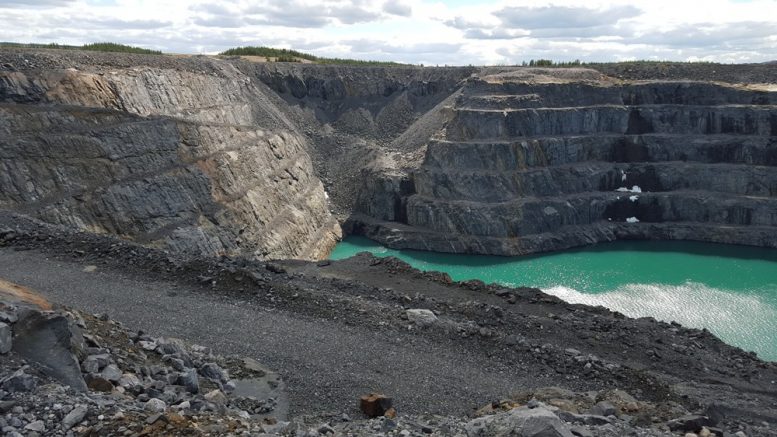It’s only been a year and a half since Troilus Gold (TSX: TLG; US-OTC: CHXMF) began drilling in the Southwest Zone at its namesake Troilus gold project, about 170 km northeast of Chibougamau in Quebec’s Frotet-Evans greenstone belt.
The Southwest Zone, about 2.5 km southwest of the main production pit at a former mine on the property and the main mineral corridor at the project, has become one of the company’s most important targets. (The past-producing gold and copper mine generated over 2 million oz. gold and 70,000 tonnes of copper from open-pit operations between 1996 and 2010.)
Highlights from the latest assay results include drillhole ZSW21-512, which returned 3.58 grams gold-equivalent per tonne over 15 metres starting from 71 metres, including 6.76 grams gold-equivalent per tonne over 7 metres, 27.43 grams gold-equivalent over 1 metre, 9.27 grams gold-equivalent per tonne over 1 metre; and 4.31 grams gold-equivalent over 1 metre.
The hole was drilled 400 metres south and on trend from drillhole ZSW-189, which was drilled last year and cut 2.05 grams gold-equivalent per tonne over 48 metres.
“The latest results from the Southwest are exceptional and expand the mineralization in a direction that has not previously been tested,” Justin Reid, the company’s president and CEO stated in a press release. “Our understanding of this deposit continues to improve as we expand mineral envelops and better define the high-grade component of mineralization within it, which is present throughout the ore body.”
Other results from the latest batch of assays include 16.96 grams gold-equivalent over 1 metre starting at 436 metres downhole in drillhole ZSW21-500, directly below the deepest part of the pit shell outlined in a preliminary economic assessment completed last year.
The 2020 PEA outlined a 22-year, 35,000-tonne-per-day open pit and underground mine, with the 9,000 tonne-per-day sub-surface portion starting up in the eighth year.
Once in production the study estimated the mine would produce an average of 220,000 gold oz. per year over the first five years of operation, and 246,000 gold oz. in the first 14 years of mine life. On the fifteenth year, the mine would generate 98,000 gold oz. annually.
With all-in sustaining costs (AISCs) estimated at US$1,051 per gold oz. and an initial capital outlay of US$333 million, the after-tax net present value estimate for the project comes in at US$576 million, at a 5% discount rate, with a 22.9% internal rate of return, based on US$1,475 per oz. gold.
The underground development would require an additional US$240 million of capital to establish between years six and eight. Open-pit mining would be completed by year 14, while the early-stage study scheduled pit feed from the 87, J and Southwest zones. The 87 zone is the sole area with an underground component.
On the processing side, the plant design features crushing, milling with gravity gold concentration and copper flotation and concentrate filtration. The gold-enriched copper concentrate would be sent to a smelter for refining.
The development would churn out a payable total of 3.8 million oz. gold, 265 million lb. copper and 1.5 million oz. silver over its life.
The company updated the project’s resource estimate in July 2020, outlining 177.3 million indicated tonnes grading 0.75 gram gold per tonne, 0.08% copper and 1.17 grams silver per tonne, as well as 116.7 million inferred tonnes grading 0.73 gram gold, 0.07% copper and 1.04 grams silver.
Since the mineral resource estimate cut-off, the company has drilled about 10,000 metres a month and plans to update the resource and complete a prefeasibility study.
Troilus Gold acquired the 1,420 sq. km project in 2017.


Be the first to comment on "Troilus Gold drills more high grade in Quebec"